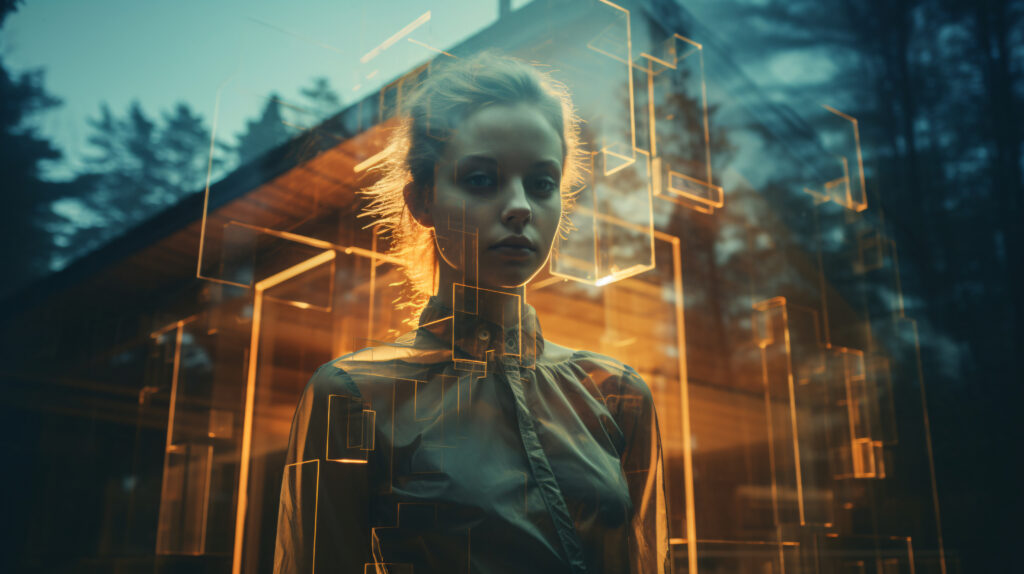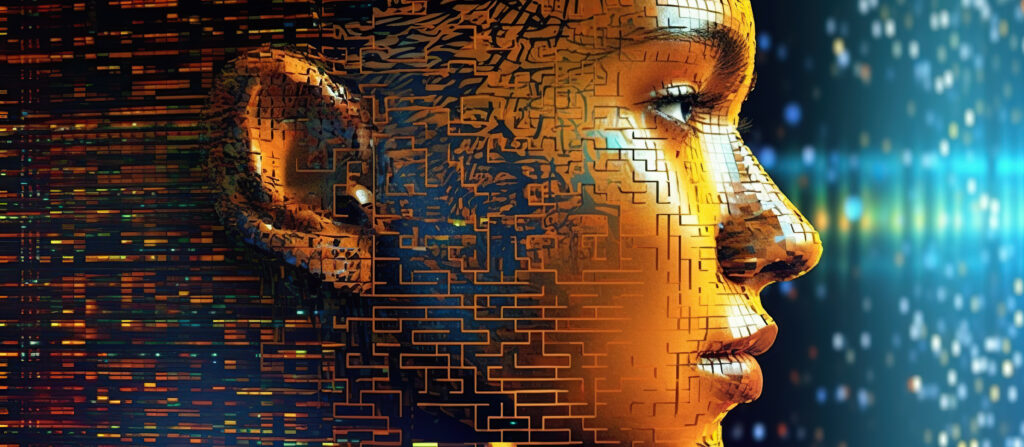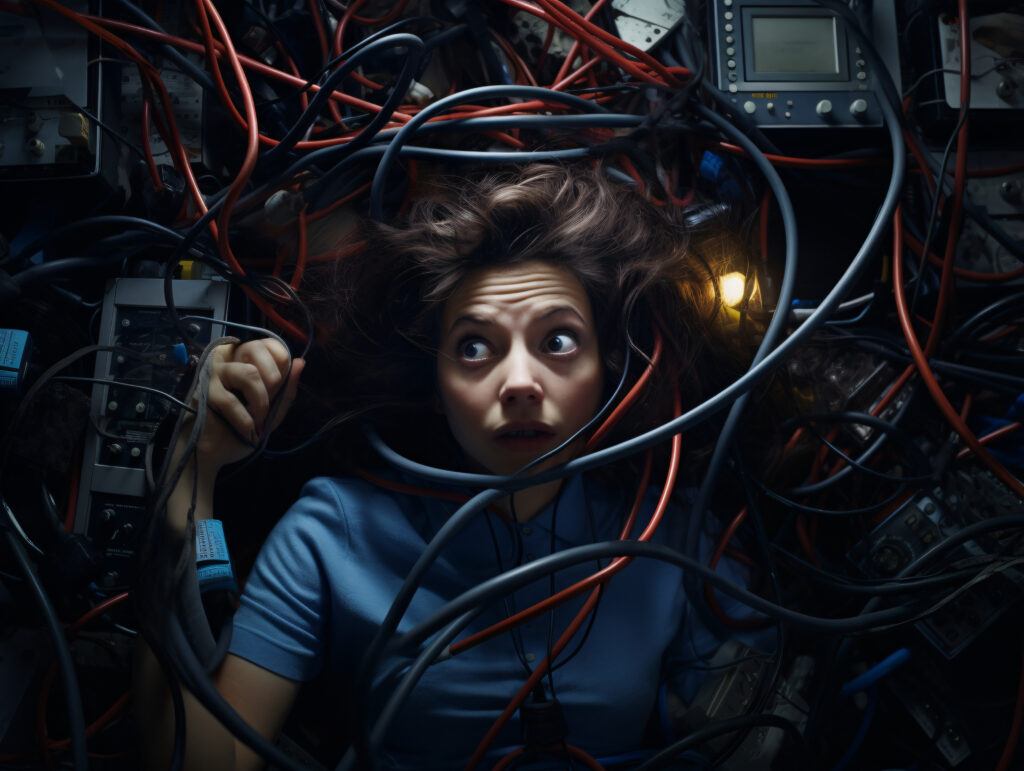Creativity at Risk? Exploring AI Art Generation with Neural Networks
In recent years, the emergence of artificial intelligence in the art generation has sparked a contentious debate within the creative community. Proponents of AI art generators herald the arrival of neural networks as a revolutionary tool that democratizes art by enabling skilled and novice creators to produce works with unprecedented complexity and variation.
Critics, however, contend that the proliferation of algorithmically produced art risks undermining the intrinsic value of human creativity, reducing the artistic process to a set of data points that can be endlessly replicated and modified.
As we stand at this technological crossroads, the question remains: are neural networks enhancing artistic expression or eroding the foundations of originality and human artistic merit?
The discourse surrounding this issue touches upon the essence of creativity, the preservation of artistic integrity, and the future role of artists in a rapidly evolving digital landscape.
Key Takeaways
- AI art has the potential to push creative boundaries and be an innovative partner in art creation.
- However, there are concerns about AI-generated art’s lack of emotional depth and originality.
- Collaboration between AI and human artists can help overcome these limitations and enhance creativity.
- Ethical considerations must be addressed in AI art generation, such as copyright and ownership rights and the potential devaluation of human creativity.
Unpacking AI Art Generation

While AI-generated art has enabled the creation of visually unprecedented works, it is essential to closely examine the intricacies of this technology’s impact on human creativity and its implications within various industries.
Generative AI, particularly AI image generators, have become powerful tools that supplement and amplify the artistic process. These systems, which rely on complex neural networks and vast amounts of training data, allow for the synthesis of creative work that imitates the style of human artists and explores realms beyond human imagination.
The collaboration between artists and generative models, including diffusion models, has birthed a new form of art-making where the boundaries of human creativity are being redefined. Artists can now prompt these AI systems to generate novel visual concepts, expanding their creative landscape. However, such advancements raise critical questions about the artist’s originality and role in the age of machine-assisted creation.
Moreover, the deployment of AI in artistic expression has rippled across multiple sectors, challenging traditional production methods in fields like game design, film, and virtual environments. While some herald this era as a renaissance of creativity, others voice concerns about the ethical implications and the potential for job displacement, urging a cautious approach to integrating AI into the heart of creative industries.
Neural Networks Explained

Understanding the mechanics behind AI-generated art necessitates an exploration of neural networks, which serve as the foundation for these sophisticated generative models. These computational frameworks draw inspiration from the human brain, consisting of layers of nodes or ‘neurons’ that simulate the neural connections found in biological systems.
Neural networks are instrumental in developing AI art, particularly when enhanced with deep learning techniques. They analyze vast datasets, learning to recognize and replicate complex patterns. This process is crucial for image generation, enabling the creation of visually compelling and realistic artwork. The networks evolve through a training phase, where they iteratively improve their output based on feedback.
- Generative Models in AI Art:
- Generative Adversarial Networks (GANs): Comprise two competing networks (generator and discriminator) to enhance the realism of generated images.
- Stable Diffusion and Diffusion Models: Utilize a process that starts with a random pattern and refines it into a coherent image, guided by learned data distributions.
- Stability AI: A forefront entity in deploying these neural network models, aiming to create realistic outputs that challenge the boundaries of creative generation.
The fusion of generative capabilities and neural networks has given rise to powerful language models and image synthesis tools that are reshaping the landscape of digital art.
The Creativity Debate

The emergence of AI-generated art has sparked a contentious debate regarding its influence on the essence and future of human creativity in the artistic domain. Proponents of AI art herald it as a generative tool that broadens the horizon of what is possible, pushing the boundaries of the creative process. They argue that artificial intelligence acts as a collaborator, augmenting the abilities of human artists to produce new content that might not have originated from a purely human imagination.
On the flip side, critics voice concerns that AI image generators could potentially displace the intrinsic value of creative human work. They contend that generated images, while often novel, lack the emotional depth and originality that arise from the human experience. The creativity debate thus oscillates between embracing AI as an innovative partner in art creation and fearing it as a harbinger of a future where human creativity is undermined.
Central to this discourse is collaboration between AI and human artists, a dynamic that could redefine the understanding of artistic expression. This conversation continues to evolve as AI art tools’ capabilities and the creative community’s responses develop.
Ethical Considerations

Within the realm of AI art generation, ethical considerations are paramount, particularly regarding the moral implications associated with the origination and authenticity of the artwork.
The deployment of AI technologies in art raises complex questions about copyright and ownership rights, as AI-drawn images could infringe upon the intellectual property of human artists.
Furthermore, the intrinsic biases of AI systems must be scrutinized to ensure that AI-generated art does not perpetuate societal prejudices or diminish the value of human creativity.
Moral Implications of AI
As AI-generated art continues to influence creative industries, examining the ethical considerations accompanying its rise is imperative. This includes issues related to authorship, originality, and the potential devaluation of human creativity.
- Authorship and Copyright Law
- AI is taking credit for art created by human brains.
- Models are trained on billions of images, including those of living artists.
- Create new copyright challenges for digital images
- Impact on Human Artists
- Devaluation of the creative work of artists
- Relationships between different companies involved and the artists whose work is used to help train AI
- Data Privacy and Use
- Personal data of internet users potentially used in creating content
- Predictive models generate something new, raising concerns about the misuse of digital artist profiles and their work
AI researchers and companies behind AI generators must navigate these moral waters carefully, respecting both the legacy of human creativity and the exciting potential of new technology.
Authenticity in AI Art
Exploring the realm of authenticity in AI-generated art reveals a complex web of ethical considerations. These considerations range from the integrity of creative expression to the implications for human artists and copyright laws.
The debate hinges on whether an AI-generated image can genuinely embody the authenticity in AI art that artists would ascribe to human-made creations. While some fear these image generators are part of a trend ruining creativity, others argue they are a tool for enhancing it.
When a piece of art emerges from an algorithm, the creative contribution of the data behind it becomes crucial. As AI continues participating in creative realms, such as the State Fair Fine Art competition, the art world must grapple with these evolving ethical dimensions.
Ensuring that authenticity and human creativity are preserved alongside technological innovation is paramount.
Real-World Applications
Harnessing the power of artificial intelligence, AI-generated art is making significant strides across various sectors, proving its versatility and impact in real-world applications. In this era of generative creativity, AI models are not just tools for novelty but pivotal in diverse industries.
- Visual Content Creation
- **AI called upon for *art therapy***: aiding emotional healing and self-expression.
- Presentations and reports: AI-generated images offer cost-effective, time-saving solutions for visual aids.
- Copyright and Personalization: Users can create image assets with full ownership rights tailored to their needs.
- Entertainment and Media Production
- Game development: AI creates intricate, unique environments and characters.
- Film and virtual realities: AI-generated art propels the technical world-building process in metaverses and movies.
- Innovative Applications
- Text illustration: Bringing life to text-only content, broadening the accessibility of visual storytelling.
- Enabling non-artists: Individuals without traditional artistic skills can now produce aesthetically pleasing visuals.
- Notably, AI-generated art was recognized at the Colorado State Fair Fine Art competition, signaling acceptance in traditional art circles.
These real-world applications of AI-generated art showcase a transformative shift from skepticism to integration within the fabric of creative industries.
Future of Artistic AI
The interplay between artificial intelligence and human ingenuity is poised to redefine the contours of the creative landscape.
As AI art generators become more sophisticated, they offer a toolkit for enhancing artists’ creative processes, providing new opportunities for collaboration and experimentation.
The question of originality in AI-generated art continues to provoke debate, necessitating a critical examination of authorship and the artist’s evolving role in the machine-learning age.
Enhancing Creative Processes
Artificial intelligence’s role in enhancing creative processes signals a transformative era in artistic expression, as it merges the vastness of human creativity with the computational power of machines. AI tools have ushered in new human work dynamics by enabling artists to create once inconceivable images.
- AI Images:
- It was used to train on vast data sets, producing art with familiar yet novel aesthetics.
- Have created hundreds of images, accelerating the creative workflow.
- Generate visuals far beyond traditional methods for the first time.
- Enhancing Creative Processes:
- AI will not make human artists obsolete but instead expand their toolkit.
- Introduces new genres and perspectives, influencing the future of art.
- Practical Applications:
- Used in presentations and reports, offering a rapid, cost-effective solution.
- Every image can be unique and tailored to specific needs or themes.
Originality in AI Art
In exploring the originality of AI-generated art, we confront the nuanced intersection of technology’s capabilities and the intrinsic value of human creativity. Powerful AI tools have enabled the creation of new images that a human would take considerable time to create. These images, often formed from the Gaussian noise of a blank canvas, are transformed through layers of neural networks into complex visuals. The originality in AI art lies in the never-before-seen pictures themselves and in the novel ways humans interact with technology, using natural language to guide the creative process.
| Aspect | Human-Created Art | AI-Generated Art |
|---|---|---|
| Originality Source | Human Imagination | Algorithmic Process |
| Creation Speed | Weeks to Months | Seconds to Minutes |
| Novelty Potential | Limited by Skill | Nearly Limitless |
| Accessibility | More Exclusive | Broadly Inclusive |
| Collaboration Possibility | With Other Humans | With AI Systems |
AI’s Impact on Artists
Often, AI-generated art is viewed as a double-edged sword for artists, simultaneously expanding creative possibilities and sparking debates over originality and authorship within the art community. While some artists embrace AI as a tool for collaboration and exploration, others see it as a threat to the traditional values and skills that have defined the art world for centuries.
- Expansion of Creative Possibilities
- AI-generated art offers new visual aesthetics and styles, pushing artists to explore beyond human limitations.
- A New York Times article may highlight AI art’s ability to inspire human artists, fostering a synergy between machine efficiency and creativity.
- The emergence of new media genres, such as metaverse and game design, where AI plays a significant role, creates avenues for artists to diversify their portfolios.
- Challenges to Traditional Artistry
- Concerns about job displacement arise as AI demonstrates the capacity to produce art at a higher speed and volume.
- Ethical considerations are at the forefront, questioning the originality of AI-generated works and the potential for plagiarism.
- Future Outlook
- The art industry is likely to witness a balance between human creativity and AI, with a focus on ethical guidelines and addressing biases.
- As tools and platforms evolve, artists may find themselves in roles emphasizing their irreplaceable attributes, such as emotional intelligence and conceptual creativity.
Balancing Technology and Artistry
The quest to balance technology and artistry in AI-generated art necessitates a nuanced understanding of both the potential and limitations of artificial intelligence as a creative partner. Augmenting imagination with AI tools offers artists unprecedented opportunities to push the boundaries of their creative processes. Yet, this collaborative innovation raises significant ethical dilemmas, including privacy concerns, copyright implications, and the risk of bias in algorithms that may influence artistic outputs.
Balancing automation with the need to preserve the human touch is central to maintaining the authenticity of art. AI-generated works provoke authenticity debates, questioning the value and originality of art devoid of direct human craft. Redefining creativity in this new landscape requires a delicate interplay between machine efficiency and human ingenuity.
Addressing these concerns means establishing frameworks that respect the integrity of artistic expression while leveraging AI’s capabilities. This involves confronting bias, ensuring transparency, and safeguarding the rights of creators and consumers alike.
Ultimately, the art world must navigate these challenges to ensure that AI is an ally to human artists rather than a replacement, thereby upholding the irreplaceable value of human creativity.
FAQs
Does the statement imply that AI art generation is inherently detrimental to creativity?
The statement poses a question and does not necessarily make a definitive claim. It reflects a common concern or debate about whether AI art generation, mainly through neural networks, has negative implications for human creativity.
How could neural networks be perceived as potentially ruining creativity in art?
Some argue that reliance on neural networks may lead to losing the human touch, intuition, and the spontaneous, emotional aspects of traditional artistic processes. Concerns also arise about the potential homogenization of artistic styles generated by algorithms.
In what ways can AI art generation be seen as complementing human creativity?
AI art generation can complement human creativity by providing new tools, inspiration, and possibilities. It opens avenues for collaboration, exploration of novel styles, and generating ideas that may not have been conceived otherwise.
Does the use of neural networks in art generation undermine the uniqueness of human expression?
Critics argue that using neural networks could lead to replicating existing styles and diminish the uniqueness of human expression. However, proponents contend that AI can augment creativity by offering new perspectives and facilitating novel artistic endeavors.
Can neural networks contribute to the democratization of art creation?
Yes, neural networks can contribute to the democratization of art creation by making creative tools more accessible. They enable individuals with varying artistic expertise to engage in the artistic process and express themselves through AI-generated art.
